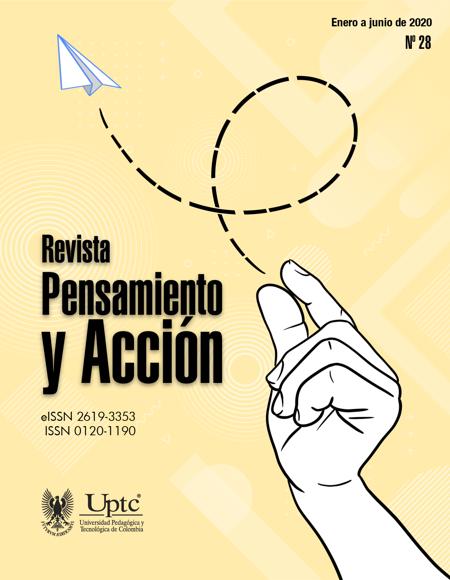Road Accident Analysis of Motorcycles Using Geographic Information System. Case Study: Tunja-Boyacá

Abstract
This research shows the results of applying the technique of using Kernel density variables to develop accident density maps on motorcycles. Though Geographic Information Systems (GIS) in the city of Tunja, Boyacá, which is listed as an intermediate city according to DANE, in the period corresponding to 2016-2018. In Boyacá, specifically in its capital, Tunja. It is important to implement new measures that are the result of research and so that they can adapt to the geographical, economic, and social characteristics of the studied area in order to mitigate the situation that occurs due to various causes attributed to drivers, mainly motorcyclists, who involve pedestrians and different road users. This analysis contemplates the different road corridors with accident rate in the city of Tunja. It is important to emphasize that the research was carried out under a qualitative and quantitative approach; the information was extracted from databases obtaining the parameters that determine the Kernel density variables through Geographic Information Systems (GIS). The points of view of the actors involved in this case the motorcyclists were evaluated and analyzed. Finally, this research concludes the spatial and temporal analysis to identify the sections of critical incidence in the city, which can be corrected through architectural, engineering and urban interventions to improve, prevent and avoid accidents in the city.
Keywords
density and accidents gathering, geographic information system, transport security, traffic accident
References
- American Association of State Highway and Transportation Officials (2011). A Policy on Geometric Design of Highways and Streets, Washington D. C.
- Alcaldía Mayor de Bogotá D.C.-Instituto de Desarrollo Urbano (2013). Guía para el diseño de vías urbanas para Bogotá D.C., Bogotá.
- Alcaldía Mayor de Bogotá D.C.-Secretaría de Movilidad (2019). Guía de auditorías de seguridad vial en vías urbanas, Bogotá.
- Banco Interamericano de Desarrollo y División de Transporte (2013). Avances en seguridad vial en América Latina y el Caribe 2010-2012.
- Barón, D. & Munévar, M. (2014). Análisis espacial de accidentalidad vial en Boyacá utilizando SIG. (Trabajo de grado). Tunja-Boyacá: Universidad Pedagógica y Tecnológica de Colombia.
- Cerquera, F. (2015). Análisis especial de los accidentes de tráfico en Bogotá D.C. (Trabajo de grado). Universidad Pedagógica y Tecnológica de Colombia. Tunja-Boyacá.
- Cerquera, F., Pabón, J., & Fajardo, R. (2008). Diseño de un plan estratégico de seguridad vial departamental (Modelo piloto para el departamento de Boyacá). Revista Facultad de Ingeniería, 17(24), 81-99.
- Cruz, R., Quintero-Ortiz, L., Galán-Pinilla, C., & Espinosa-García, E. (2015). Evaluación de técnicas no destructivas en elementos de concreto para puentes. Revista Facultad de Ingeniería, 24(40), 81-94. https://doi.org/10.19053/01211129.3850
- Instituto Nacional de Vías-Ministerio de Transporte (2008). Manual de diseño geométrico de carreteras, República de Colombia.
- Ministerio de Transporte (2014). Resolución 1565 - Plan estratégico de seguridad vial, Bogotá.
- Observatorio Iberoamericano de Seguridad Vial (2013). Informe de gestión año 2013.
- Organización Mundial de la Salud (2015). Informe sobre la situación mundial de la seguridad vial. Ginebra.
- Pérez, A., & Lastre, J. (2014). Evaluación de puntos críticos de accidentalidad vial en la ciudad de Sincelejo, (Trabajo de grado). Cartagena-Bolivar: Universidad de Cartagena.
- Sánchez, J. (2018). Estructuración de un mapa de riesgo de accidentes de tránsito en Tunja mediante SIG (Trabajo de grado). Tunja-Boyacá: Universidad Pedagógica y Tecnológica de Colombia.